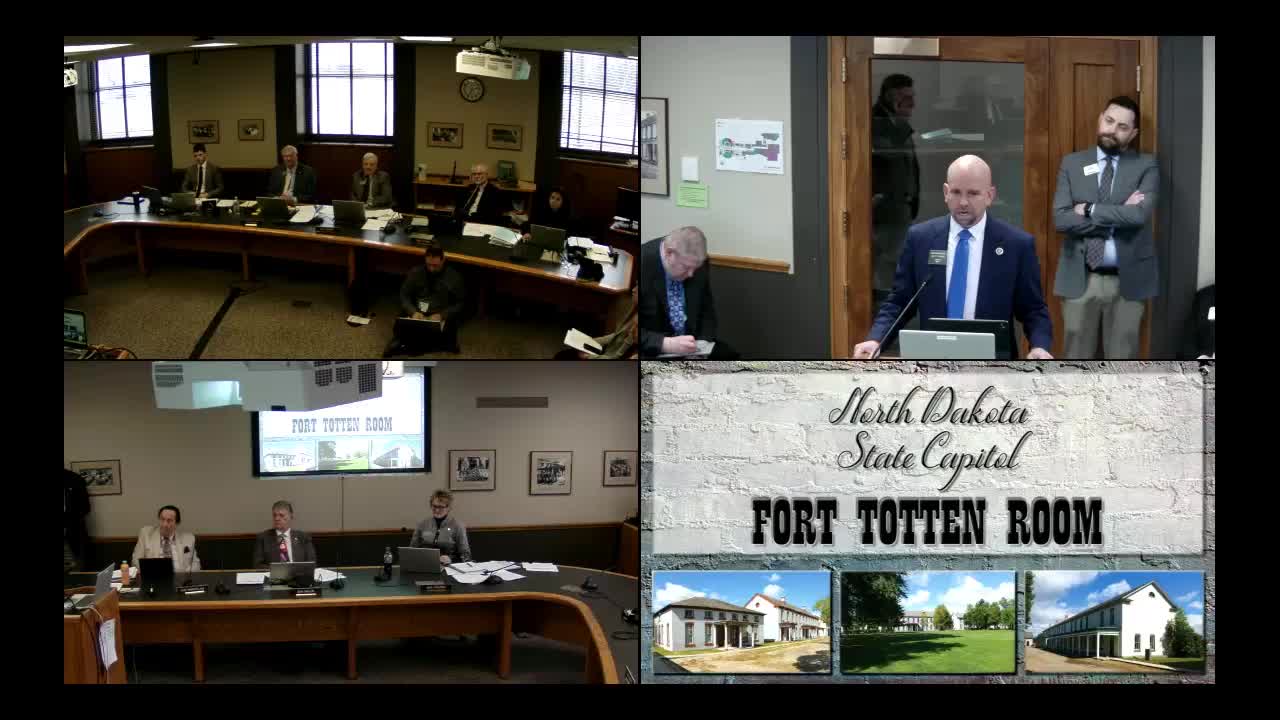North Dakota legislature considers 10 mil property tax buyout amidst funding debates
March 11, 2025 | Finance and Taxation, Senate, Legislative, North Dakota
This article was created by AI summarizing key points discussed. AI makes mistakes, so for full details and context, please refer to the video of the full meeting. Please report any errors so we can fix them. Report an error »

In a pivotal meeting of the North Dakota Senate Finance and Taxation Committee, lawmakers gathered to discuss a significant property tax relief bill that could reshape the financial landscape for residents. The atmosphere was charged with anticipation as legislators navigated the complexities of property taxation, aiming to clarify the implications of a proposed 60-mill buyout for residential properties.
The bill's sponsor took center stage, emphasizing the importance of understanding the distinction between residential property and primary residences. "Residential property is a type of property, while primary residence is a use of that property," he explained, highlighting how ownership intentions can shift over time. This nuanced understanding is crucial as the state grapples with the implications of property valuations that have surged in recent years.
Historically, North Dakota mandated a 185-mill levy for K-12 education, which has since been reduced to 60 mills. The sponsor pointed out that as property values rise, local districts struggle to levy the necessary mills due to existing caps, creating a financial quagmire that has persisted for over a decade. "This is the session that we should get out where everybody is able to levy the full 60 mills," he asserted, advocating for a solution that would allow school districts to receive adequate funding without the burden of inflated property valuations.
As the discussion unfolded, the committee considered an amendment that would adjust the proposed buyout from 60 mills to 30 mills, encompassing all property types, including commercial and agricultural. This change would increase the potential funding to approximately $320 million, a significant boost compared to the original residential-only proposal. However, just moments after the amendment was accepted unanimously, a motion was made to further reduce the buyout to 10 mills, sparking a heated debate among committee members.
Ultimately, the committee settled on a 10-mill buyout, a decision that reflects the ongoing struggle to balance property tax relief with the financial realities facing local school districts. As the meeting concluded, the implications of this decision loomed large, leaving many to ponder how it would affect property owners and educational funding in the state.
With the bill now in play, North Dakota residents and lawmakers alike will be watching closely to see how this property tax relief initiative unfolds, and whether it will provide the much-needed support for schools and communities across the state.
The bill's sponsor took center stage, emphasizing the importance of understanding the distinction between residential property and primary residences. "Residential property is a type of property, while primary residence is a use of that property," he explained, highlighting how ownership intentions can shift over time. This nuanced understanding is crucial as the state grapples with the implications of property valuations that have surged in recent years.
Historically, North Dakota mandated a 185-mill levy for K-12 education, which has since been reduced to 60 mills. The sponsor pointed out that as property values rise, local districts struggle to levy the necessary mills due to existing caps, creating a financial quagmire that has persisted for over a decade. "This is the session that we should get out where everybody is able to levy the full 60 mills," he asserted, advocating for a solution that would allow school districts to receive adequate funding without the burden of inflated property valuations.
As the discussion unfolded, the committee considered an amendment that would adjust the proposed buyout from 60 mills to 30 mills, encompassing all property types, including commercial and agricultural. This change would increase the potential funding to approximately $320 million, a significant boost compared to the original residential-only proposal. However, just moments after the amendment was accepted unanimously, a motion was made to further reduce the buyout to 10 mills, sparking a heated debate among committee members.
Ultimately, the committee settled on a 10-mill buyout, a decision that reflects the ongoing struggle to balance property tax relief with the financial realities facing local school districts. As the meeting concluded, the implications of this decision loomed large, leaving many to ponder how it would affect property owners and educational funding in the state.
With the bill now in play, North Dakota residents and lawmakers alike will be watching closely to see how this property tax relief initiative unfolds, and whether it will provide the much-needed support for schools and communities across the state.
View full meeting
This article is based on a recent meeting—watch the full video and explore the complete transcript for deeper insights into the discussion.
View full meeting
